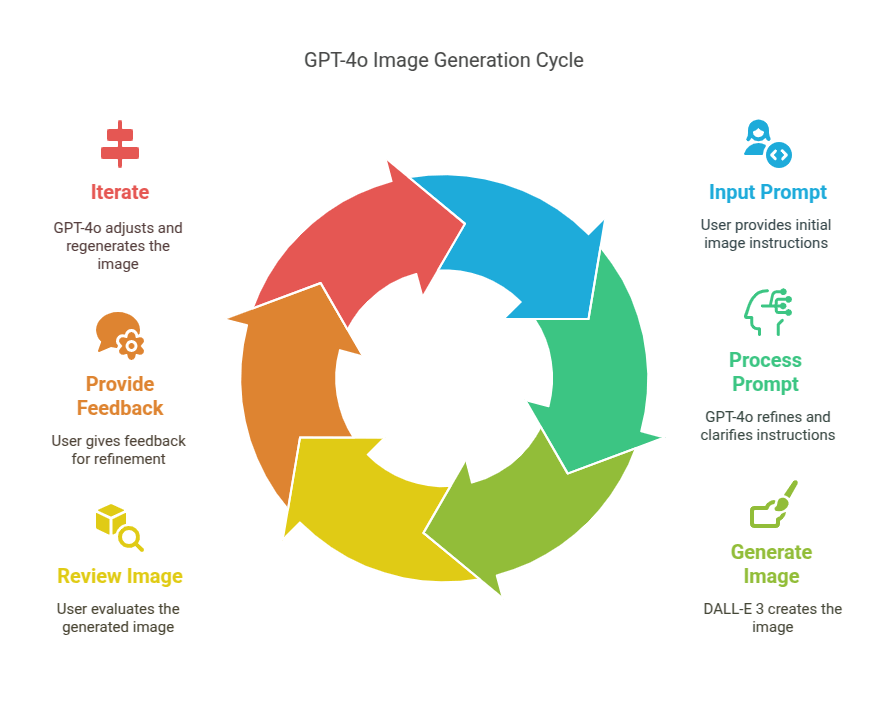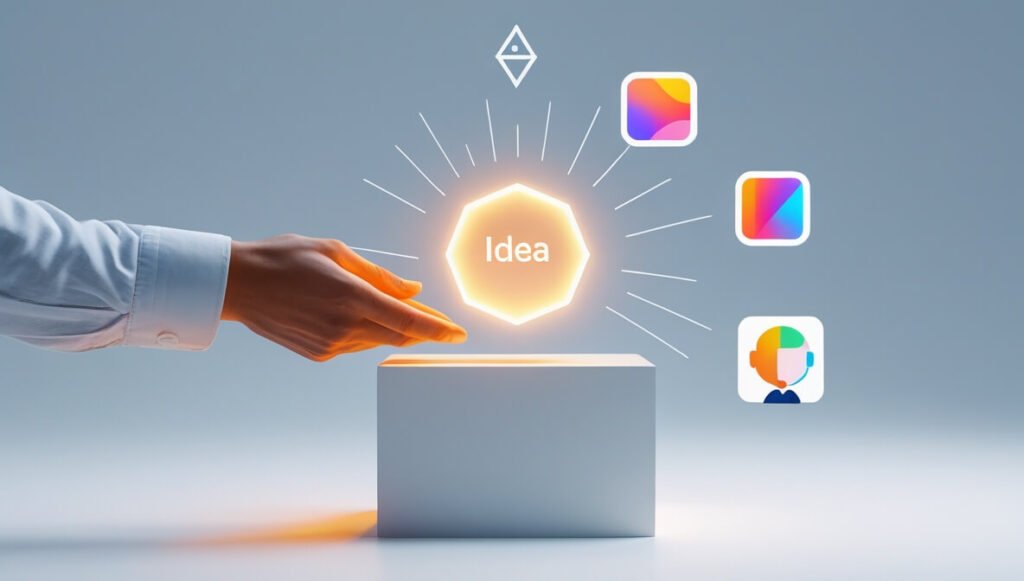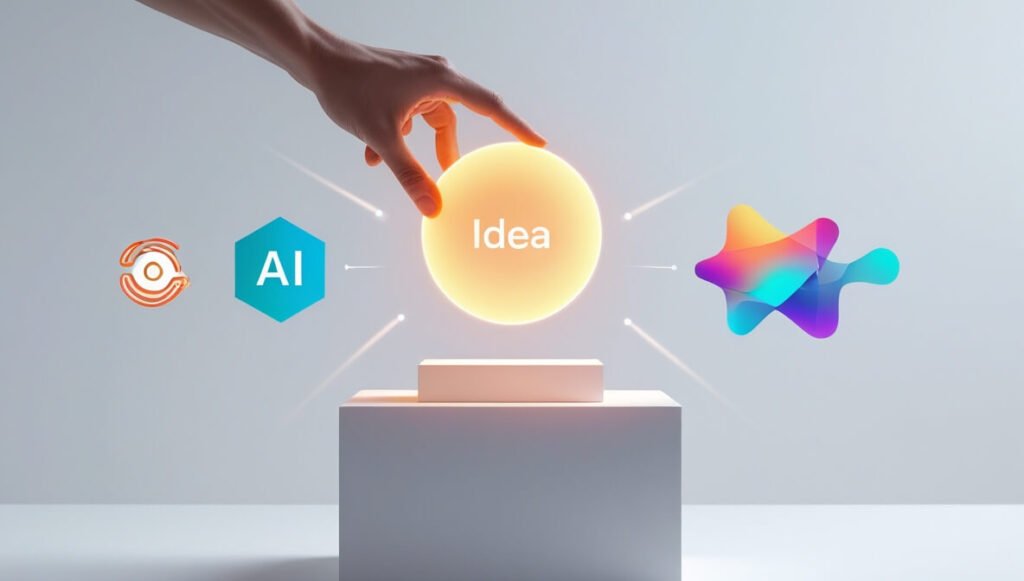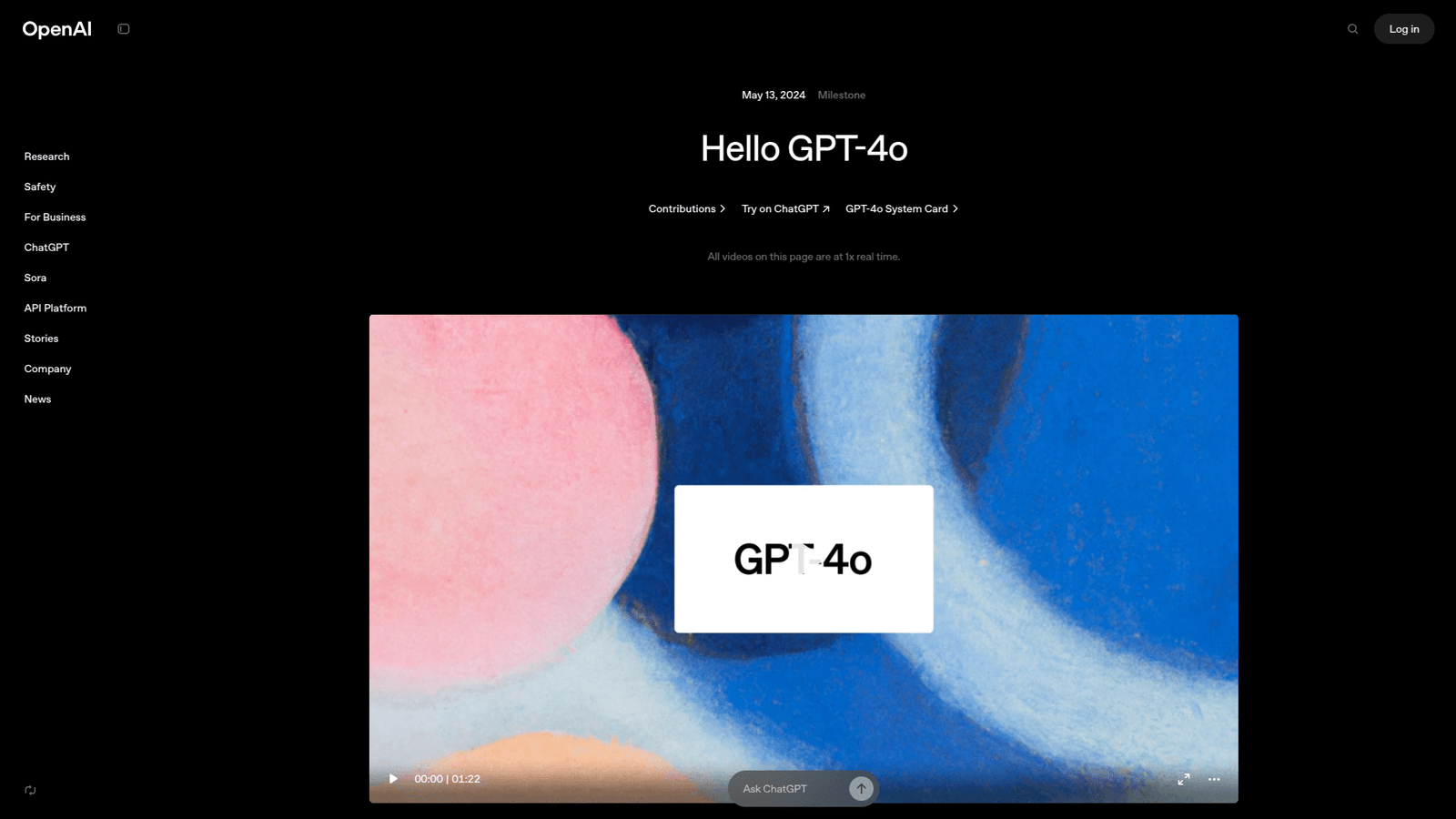GPT-4o is here to revolutionise Image Generation for Visual and Graphic Design pros. Say goodbye to creative blocks & hello to faster, stunning visuals. See how it works!
Here’s What Happened When I Tried GPT-4o for Image Generation
Alright, let’s talk about AI.
Specifically, let’s talk about how it’s bulldozing its way into the Visual and Graphic Design space.
You’ve seen it.
AI is everywhere now.
And if you’re in design, you’re probably wondering if it’s friend or foe.
Is it going to steal your job?
Or make it a thousand times easier?
I’ve been testing something big.
Something that could fundamentally change how you create visuals.
It’s called GPT-4o.
And yeah, it does way more than just text.
Today, we’re focusing on one massive part: Image Generation.
I put it through its paces.
Tried to break it.
Tried to see if it could actually deliver on the hype.
Does it work?
Can it replace your workflow?
Does it actually help you make money?
Let’s get into it.
Table of Contents
- What is GPT-4o?
- Key Features of GPT-4o for Image Generation
- Benefits of Using GPT-4o for Visual and Graphic Design
- Pricing & Plans
- Hands-On Experience / Use Cases
- Who Should Use GPT-4o?
- How to Make Money Using GPT-4o
- Limitations and Considerations
- Final Thoughts
- Frequently Asked Questions
What is GPT-4o?
Okay, first things first.
GPT-4o stands for “omni”.
What does that mean?
It means it’s designed to handle text, audio, and vision inputs and outputs.
All in one model.
Think of it as GPT-4, but upgraded significantly.
Faster.
More multimodal.
More responsive.
For designers, this multimodal capability is huge.
You’re not just typing text prompts.
You can potentially show it an image and ask it to create something similar.
Or describe a visual concept using voice.
Or even upload a file and have it analyse the design elements.
Its core function?
To understand and generate content across different types of data seamlessly.
It’s aimed at a wide audience.
Writers, marketers, developers, customer support, and yes, creators like us.
It’s built to integrate into workflows.
To be a co-pilot, not just a standalone tool.
For Image Generation, it leverages its understanding of language and concepts to create visuals based on your descriptions.
It’s not just slapping pixels together.
It’s trying to understand the *intent* behind your request.
The feeling.
The style.
The context.
This is where it starts to get interesting for anyone who makes visuals for a living.
It’s not a traditional design software.
It’s a prompt-driven creation engine.
You tell it what you want, it attempts to make it.
Simple?
On the surface, yeah.
But the devil is in the details of your prompt and its ability to interpret it.
And GPT-4o seems to have a better handle on those details than previous models.
Especially when it comes to visual concepts.
Key Features of GPT-4o for Image Generation

- Advanced Prompt Understanding:
This isn’t your grandma’s text-to-image tool.
GPT-4o gets nuances.
You can describe complex scenes, styles, moods, and even specific artistic influences.
It understands modifiers like “epic,” “minimalist,” “cyberpunk,” or “painted in the style of Van Gogh.”
This means you spend less time battling the AI and more time getting the image you actually pictured in your head.
Specificity matters, and GPT-4o handles it better.
You can layer details: subject, setting, lighting, camera angle, colour palette, texture.
It takes those complex instructions and attempts to weave them into a single, coherent image.
The better you are at prompting, the better the results.
But even with simple prompts, it often delivers surprising quality.
This is key for designers who need precise control.
- Integration with DALL-E 3:
GPT-4o doesn’t generate the pixels itself.
It acts as the brain that feeds instructions to an incredibly powerful image engine, specifically DALL-E 3.
Think of GPT-4o as the expert creative director.
DALL-E 3 is the master artist following the directions.
This integration is seamless.
You just type your request into the chat interface.
GPT-4o processes it, refines the prompt (often suggesting improvements or clarifying details), and then sends it to DALL-E 3 for generation.
The power of DALL-E 3 means higher fidelity images, better handling of text within images (a common AI weakness), and more consistent results.
You get access to one of the leading AI image generators, guided by a state-of-the-art language model.
It’s like having two expert tools working together automatically.
This combined power is where the magic happens for visual creators.
- Iterative Refinement:
Rarely do you get the perfect image on the first try.
GPT-4o understands this.
Its conversational nature allows for easy iteration.
You generate an image, look at it, and then give feedback.
“Make the lighting softer.”
“Add more trees in the background.”
“Change the style to watercolour.”
It remembers the previous image and your instructions, then generates a new version based on your feedback.
This back-and-forth is crucial for design workflows.
It’s not a one-shot deal.
You can sculpt the image iteratively, guiding the AI towards your vision.
This saves a tonne of time compared to starting from scratch every time you want a change.
It speeds up the revision process dramatically.
Get 80% of the way there with the first prompt, then refine the remaining 20% with a few simple instructions.
Benefits of Using GPT-4o for Visual and Graphic Design
So, why bother with this thing if you’re already a pro designer?
Or if you’re just starting out?
First off, speed.
Creating initial concepts can take hours.
Sketching, mocking up, finding assets.
GPT-4o spits out concepts in minutes.
You get multiple variations almost instantly.
This isn’t about replacing brainstorming.
It’s about accelerating it.
Get ideas out of your head and into a visual format faster than ever before.
Think of it as a hyper-efficient assistant who can draw anything you describe.
Quality improvement is another big one.
With access to DALL-E 3 via GPT-4o, the raw output quality is often high.
You can get production-ready assets or high-quality starting points for further editing.
No more sifting through stock photo sites for hours.
Generate exactly what you need.
Need a specific abstract background for a website?
Prompt it.
Need a unique character illustration for a social media post?
Prompt it.
It helps overcome creative blocks.
Staring at a blank canvas?
Ask GPT-4o to generate some ideas based on your theme.
It can show you angles or styles you hadn’t considered.
It acts as a brainstorming partner that never runs out of steam.
Cost savings are real too.
Stock photo subscriptions add up.
Hiring illustrators for every single asset isn’t always feasible for smaller projects or businesses.
GPT-4o provides a cost-effective way to generate unique visuals on demand.
It democratises high-quality image creation.
Anyone with a good idea and the ability to describe it can create compelling visuals.
Finally, consistency.
Once you dial in a prompt or a style, you can generate multiple images with a consistent look and feel.
Crucial for branding and campaign assets.
Need a series of illustrations for a blog post?
Use the same prompt structure and regenerate.
It keeps things looking unified.
Less time spent trying to manually match styles across different assets.
More time spent actually designing and using the generated images.
Pricing & Plans

Alright, let’s talk money.
Because tools are only useful if you can afford them.
GPT-4o is available through several tiers from OpenAI.
Yes, there is a free tier.
You can access GPT-4o capabilities, including Image Generation via DALL-E, without paying a penny.
However, there are limitations on the free plan.
Usage caps are lower.
You might experience slower response times during peak hours.
Access to the very latest features might be slightly delayed compared to paid users.
It’s a great way to test the waters.
See if it fits your workflow.
Experiment with prompts.
If you get serious about using it for design work, you’ll likely need a paid plan.
The main premium offering is ChatGPT Plus.
This costs $20 per month.
With ChatGPT Plus, you get significantly higher usage limits.
Faster response times.
Priority access to new features, including ongoing improvements to GPT-4o and DALL-E.
Access to custom GPTs built by others or yourself.
For someone using Visual and Graphic Design professionally, that $20/month can be an absolute steal.
Compare it to the cost of stock photo subscriptions, illustration software licenses, or even just the value of your time saved.
There are also API access plans for developers or businesses who want to integrate GPT-4o into their own applications or workflows.
API pricing is usage-based.
GPT-4o API calls are priced by tokens (for text) and by image units (for vision/image generation).
Pricing is tiered and gets cheaper per unit as you use more.
For most individual designers or small teams, the ChatGPT Plus plan is the most relevant.
Is it worth $20?
If you use it to generate just a handful of production-quality images or save even a few hours of work per month, absolutely.
It pays for itself quickly.
Alternatives exist, like Midjourney or Stable Diffusion.
Midjourney has a subscription model starting around $10/month.
Stable Diffusion can be free if you run it yourself, or there are cloud-based services with varying prices.
The difference with GPT-4o/DALL-E is the natural language interface and iterative refinement within a chat context.
It feels more conversational and integrated into a general workflow, not just a dedicated image tool.
For many, the ease of use via ChatGPT is a major selling point over tools that require specific syntax or setup.
Hands-On Experience / Use Cases
Okay, enough theory.
How does this actually play out when you’re trying to make stuff?
I’ve used GPT-4o extensively for generating visuals.
Here’s what it feels like.
You start with a prompt.
Let’s say I need an image for a blog post about future tech.
Prompt: “Generate an image of a futuristic city skyline at sunset, highly detailed, sci-fi art, vibrant colours, golden hour lighting.”
GPT-4o processes it. Sometimes it asks clarifying questions, which is helpful.
Then it goes off and generates four variations using DALL-E 3.
Typically, within 30-60 seconds, I have four images.
They are usually pretty close to what I described.
The detail is often impressive.
The lighting and colours hit the mark based on the prompt.
But maybe the buildings aren’t quite futuristic enough in one.
Or the composition feels off in another.
This is where the iteration comes in.
I can say: “Okay, I like image 3, but make the buildings taller and add flying cars.”
It takes that feedback and generates new versions based on image 3.
This back-and-forth is incredibly efficient.
Instead of starting from scratch, you’re building on previous results.
Use cases? They’re everywhere for Visual and Graphic Design.
Blog Post Headers: Need a unique image for every post? Generate them on demand. Much better than generic stock photos.
Social Media Graphics: Create eye-catching visuals tailored to specific campaigns or themes instantly. Need a graphic promoting a summer sale? “Generate an image of a vibrant beach scene with a small ‘Summer Sale’ sign, digital art style.”
Website Assets: Backgrounds, hero images, illustrations for specific sections. Generate multiple options quickly to see what fits the site’s aesthetic.
Mockups: While not a full design tool, you can generate images that act as visual placeholders or inspiration for more complex designs.
Character Concepts: Need a quick visual representation of a character for a pitch or storyboarding? Describe them and get concepts fast.
Presentation Slides: Generate unique graphics that perfectly match the content of your slides, making presentations more engaging.
E-commerce Product Mockups (basic): Generate lifestyle shots or creative backdrops for products (though complex product integration still needs traditional tools).
I’ve used it to generate abstract art for a website background, illustrations for a marketing guide, and even concept art for a personal project.
The usability is high.
If you can type, you can generate images.
The results?
Often surprisingly good.
Sometimes weird (AI still messes up hands and strange details).
But with iteration, you can usually get something usable or inspirational.
It significantly reduces the time from “idea in head” to “visual on screen.”
Who Should Use GPT-4o?

Is GPT-4o for everyone?
Probably not *everyone*, but a lot of people can get serious value from it.
Bloggers and Content Creators: Need visuals for articles, videos, or social posts daily? This tool is a non-negotiable time-saver.
Digital Marketers: Running campaigns requires constant visual assets. A/B testing different image concepts is easy when generation is this fast. Create visuals for ads, landing pages, emails.
Small Business Owners: Can’t afford a full-time designer or expensive stock libraries? GPT-4o helps you create professional-looking graphics for your website, social media, and marketing materials on a budget.
Graphic Designers: Wait, aren’t they the target? Yes. Use it for brainstorming, generating initial concepts, creating background elements, finding inspiration, or generating assets for low-budget projects. It’s a tool to enhance your workflow, not necessarily replace it entirely (unless you want it to).
Illustrators and Artists: Use it to break creative blocks, explore different styles quickly, generate reference images, or create base layers for digital painting.
Social Media Managers: Need a constant stream of fresh visuals to keep feeds engaging? Generate unique images daily without relying on repetitive stock photos.
Website Developers: Need placeholder images or unique background graphics for sites? Generate them quickly while you build.
Presentation Makers: Create custom visuals for your slides that perfectly match your content and brand.
Students and Educators: Create visuals for projects, reports, or teaching materials quickly and easily.
Essentially, anyone who needs visuals but doesn’t have unlimited time, budget, or access to a dedicated design team can benefit massively.
And even if you *are* a seasoned designer, it’s a powerful addition to your toolkit.
It automates the tedious stuff.
It provides endless inspiration.
It lets you prototype visual ideas at warp speed.
If your job involves creating or sourcing images regularly, you should definitely try GPT-4o.
It’s built for volume and speed, which is exactly what modern digital content creation demands.
How to Make Money Using GPT-4o
Okay, let’s talk about the real reason many people are interested in AI tools.
Can you actually use GPT-4o to generate income?
Absolutely.
Especially with its Image Generation capabilities.
Here’s how:
- Offer AI Image Generation Services:
Freelance platforms are full of clients needing unique visuals.
Many don’t know how to use AI tools effectively or don’t want to subscribe to them.
You can offer services generating specific types of images for them.
Examples: social media graphics packs, blog post illustrations, unique abstract art for websites, character concepts for games or stories.
Position yourself as an “AI Visual Creator” or “Prompt Engineer for Design.”
Charge per image, per project, or offer monthly retainer packages for ongoing needs.
Your value is understanding the client’s vision and translating it into effective prompts for GPT-4o/DALL-E.
Then, potentially add value by doing minor edits or touch-ups in traditional software.
This service is in demand because it’s faster and cheaper than traditional methods for many use cases.
- Sell AI-Generated Art/Assets:
Platforms like Etsy, Gumroad, or even your own website can become digital storefronts.
Generate collections of unique AI-generated images around specific themes.
Think seamless patterns, abstract backgrounds, texture packs, stylised illustrations, stock photos of concepts that don’t exist.
Package them as digital downloads.
Licensing is key here – make sure you understand OpenAI’s terms for commercial use of generated images. (Currently, you own the images you create, subject to their terms).
You can sell these assets to other designers, content creators, or businesses.
This is a volume game – create a lot of diverse assets and list them where buyers look.
Focus on niches that aren’t oversaturated.
- Boost Efficiency for Existing Design Services:
If you already offer Visual and Graphic Design services, integrate GPT-4o into your workflow.
Use it to generate initial concepts for client projects dramatically faster.
Use it to create placeholder images or mood boards.
Generate unique assets for client websites, social media campaigns, or marketing materials without buying stock photos.
This allows you to take on more clients or projects because you’re saving time on asset creation.
You can deliver faster turnaround times, which clients love.
Your hourly rate effectively increases because you’re accomplishing more in less time.
It’s not about charging clients *less* because you used AI.
It’s about increasing your own output and profitability.
Case Study Idea (Simulated): Imagine a freelance social media manager. Before GPT-4o, they spent hours searching for the right stock photos or creating simple graphics. With GPT-4o, they can generate 5-10 unique, campaign-specific graphics in under an hour. This time saving allows them to manage more clients or spend more time on strategy, boosting their monthly income significantly without increasing their work hours proportionally.
The key is to combine the AI’s speed and generation power with your own creative direction and potentially traditional design skills for refinement.
AI isn’t just a button you press; it’s a tool you direct.
Your ability to direct it well, curate the results, and integrate them into valuable services is where the money is made.
Limitations and Considerations
Okay, let’s be real.
GPT-4o and DALL-E 3 aren’t magic wands.
They have limitations.
Accuracy can still be an issue.
Sometimes the AI gets concepts wrong.
It might misinterpret a prompt, add weird details, or fail to understand specific spatial relationships.
Hands and limbs can still look distorted.
Text within images is better than it used to be, but not always perfect.
Complex compositions with many specific elements interacting can be challenging.
Editing needs are almost always present.
The generated image is often a fantastic starting point.
But you’ll frequently need to take it into Photoshop or another editor for tweaks.
Cropping, colour correction, removing artefacts, adding specific branding elements – that’s still on you.
It’s not a substitute for traditional design software or skills.
It’s a tool that feeds those workflows.
There’s a learning curve, especially with prompting.
Getting the AI to produce exactly what you want requires skill in writing effective prompts.
It’s a different skill than using a pen tool or adjusting layers.
You need to learn what the AI understands and what it struggles with.
Experimentation is necessary.
Control can feel limited compared to traditional design.
You can’t manipulate individual pixels or shapes precisely like you can in vector software.
You’re guiding the AI at a higher level through language.
For projects requiring absolute pixel-perfect control or specific intricate details, traditional methods might still be necessary.
Ethical considerations and copyright are ongoing discussions.
Where was the training data sourced from?
Who owns the copyright to AI-generated images?
While OpenAI states you own the DALL-E images you create, the legal landscape is still evolving.
For commercial work, stay informed on the terms of service and consider potential implications.
It can be addictive.
It’s so easy to generate images that you might fall into the trap of generating too many variations instead of making a decision.
Requires discipline to stay focused on the goal.
Despite the limitations, for many use cases, the benefits of speed and creative exploration outweigh the drawbacks.
Just know it’s not a magic bullet for every single visual task.
Final Thoughts
So, what’s the verdict on GPT-4o for Image Generation?
It’s a game-changer.
But not in the way some hype might suggest.
It’s not going to magically replace skilled designers overnight.
What it does is put an incredibly powerful creative tool in the hands of anyone who can articulate their vision.
For visual professionals, it’s an accelerator.
It speeds up brainstorming.
It reduces the grunt work of finding or creating basic assets.
It provides endless inspiration.
It allows for rapid prototyping of visual ideas.
For non-designers who need visuals, it’s a democratiser.
They can create compelling images without needing complex software or skills.
The integration of GPT-4o’s understanding with DALL-E 3’s generation power is potent.
The conversational interface makes it accessible.
The iterative process makes it practical.
Is it perfect? No.
Does it still produce weird stuff? Yes.
Do you still need design skills to get the most out of it? Absolutely.
But it’s a massive leap forward in usability and capability for AI image tools.
My recommendation?
Try it.
Start with the free tier.
Play with prompts.
See how it handles your specific needs.
If you find yourself using it regularly and hitting the free limits, consider the paid plan.
It’s not just about generating images.
It’s about faster iteration, overcoming blocks, and opening up new creative possibilities.
For anyone working with visuals, especially in digital content, ignoring this technology is a mistake.
It’s here, it works, and it’s only getting better.
Integrate it. Adapt. Stay ahead.
The smart way to handle Image Generation in 2024 involves AI.
And GPT-4o is leading the charge.
Don’t fall behind.
Visit the official GPT-4o website
Frequently Asked Questions
1. What is GPT-4o used for?
GPT-4o is a multimodal AI model used for understanding and generating text, audio, and images.
For design, it’s primarily used via its connection to DALL-E 3 for creating images from text descriptions.
It helps with writing, coding, analysis, and creative tasks like Image Generation.
2. Is GPT-4o free?
Yes, GPT-4o is available on a free tier with usage limits.
A paid subscription (ChatGPT Plus) offers higher limits, faster responses, and priority access to features.
3. How does GPT-4o compare to other AI tools?
Compared to text-only models, GPT-4o is multimodal, handling images and potentially audio.
Compared to dedicated image generators like Midjourney, GPT-4o offers a more conversational interface and integrates image generation into a broader AI chat experience.
Its connection to DALL-E 3 provides high-quality results.
4. Can beginners use GPT-4o?
Yes, beginners can use GPT-4o easily.
The interface is simple – you just type what you want.
Getting perfect results might take practice with prompting, but the basics are very accessible.
5. Does the content created by GPT-4o meet quality and optimization standards?
Generated images are often high-quality and can be used as is or with minor edits.
Quality depends heavily on the prompt and the desired complexity.
It provides excellent starting points that you can then refine to meet specific project standards.
6. Can I make money with GPT-4o?
Yes, you can make money by offering AI image generation services, selling generated assets, or using it to increase efficiency in your existing design or content creation business.
It’s a powerful tool for freelancers and businesses.






